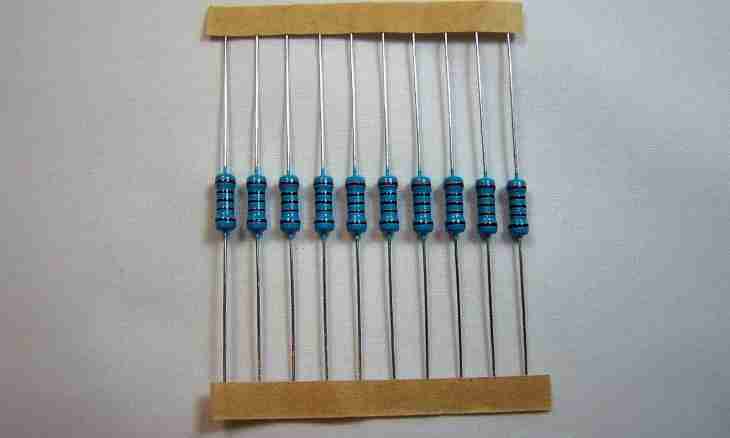Current in a resistive element, as a rule, is considered in the context of consideration of Ohm's law for subcircuit which explains regularities of change of current on a resistive element.
Instruction
1. Open the textbook in physics of the 8th class on the head "Electric phenomena". In this chapter, in particular, the electric phenomena in an electrical circuit are considered. It is known that electric current is the directed movement of free charges in a chain. Such charges usually are electrons. Respectively, force of electric current is defined as quantity of the charges passing through the cross section of the conductor per unit of time. Thus, the more charges will flow in the conductor, the more there will be also a current. And also, the more the speed of the movement of charges, the more will be current in the resistor.
2. Remember what means itself a concept of the resistor. In this case it is necessary to understand any conductor or an element of an electrical circuit having active resistive resistance as the resistor. Now it is important to ask a question of how change of value of resistance affects value of current and what it depends on. The essence of the phenomenon of resistance is that atoms of substance of the resistor form some kind of barrier to passing of electric charges. Than substance resistance is higher, especially atoms in a lattice of resistive substance are densely located. This regularity is also explained by Ohm's law for subcircuit. It is known that Ohm's law for subcircuit sounds as follows: current on the site of a chain is directly proportional to tension on the site and is inversely proportional to resistance of the site of a chain.
3. Represent on the sheet of paper the schedule of dependence of current on tension on the resistor and also from its resistance, proceeding from the law of Ohm. You receive the schedule of a hyperbole in the first case and the schedule of a straight line in the second case. Thus, current will be that more, than tension on the resistor and than less resistance is more. And dependence on resistance here brighter because it has a hyperbole appearance.
4. Pay attention that resistor resistance also changes at change of its temperature. If to heat a resistive element and to watch at the same time change of current, then it is possible to notice how at increase in temperature the current decreases. This regularity is explained by the fact that at increase in temperature fluctuations of atoms in knots of a crystal lattice of the resistor increase, reducing thus free space for passing of charged particles. Other reason reducing current in this case is the fact that at increase in temperature of substance the chaotic movement of the particles including loaded increases. Thus, the movement of free particles in the resistor becomes more chaotic, than directed, as affects reduction of current.

